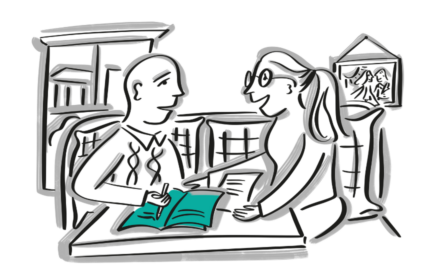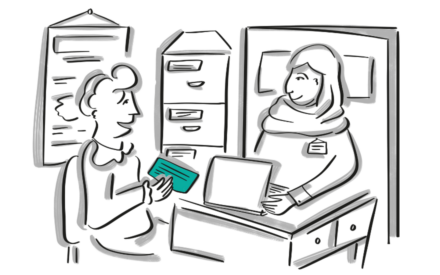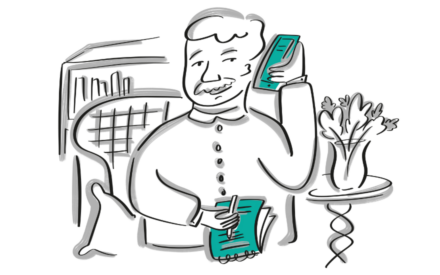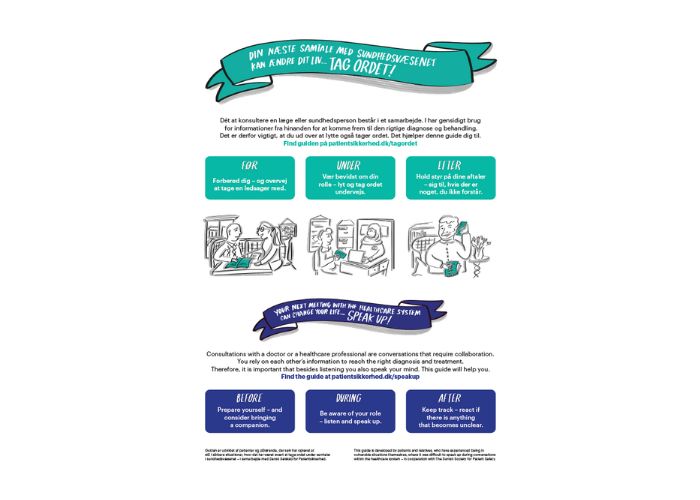Your next meeting with the healthcare system can change your life – speak up!
Consultations with a doctor or a healthcare professional are conversations that require collaboration. Each of you relies on the other’s information in order to reach the right diagnosis and treatment. Therefore, it is important that besides listening, you also feel comfortable speaking your mind. This guide aims to help you do just this.

What can you achieve by using the guide?
By using the guide, you can help yourself to have a smooth and safe process in the healthcare system, so that you are given the correct diagnosis and can receive treatment as soon as possible.
The doctor or healthcare professional needs information from you – for example about your symptoms and how they affect your everyday life. You also need information from the doctor or healthcare professional – for example about an upcoming examination, your treatment or the further course.
The guide helps you to prepare as best as possible before your interview, how you should act during your interview and how you can follow up after your interview.
When is the guide suitable?
The guide can be used in the many areas of contact that you as a citizen/patient and relatives may have with the healthcare system.
This may be when you, as a citizen or patient, need to go to the:
- Doctor
- Special doctor
- Physiotherapist
- Chiropractor
- Psychologist
- Etc.
Who is the guide relevant for?
The guide is relevant for citizens/patients and relatives who have contact with the healthcare system.
How is the guide used?
The guide consists of 3 parts: before, during and after your conversation with the doctor or healthcare professional.
- The before part helps you prepare 1-2 days before your coversation, so you get to say and ask what’s on your mind. In this part, you should also consider whether you need to bring a companion and whether you need to record the conversation.
- The during part can be read with advantage just before your conversation. It helps you to become aware of your role during the conversation, contains a speech card you can use during the conversation and a checklist that you can skim before you leave the conversation.
- The after part helps you to follow up on your conversation when you get home, so that you can get on with the process as best as possible – even if there is something you have doubts about.
The guide can be read directly on your computer, smartphone or tablet or downloaded and printed. The guide is also available as 3 short movies. Please write your notes on a piece of paper, in a notebook or on your smartphone.
See the guide for before, during and after your conversation with the healthcare system as video guides
From patients and relatives to patients and relatives
This guide is developed by patients and relatives, who have experienced being in vulnerable situations themselves, where it was difficult to speak up during conversations within the healthcare system – in cooperation with The Danish Society for Patient Safety.
The material has been created through a process of co-creation, where patient and relative representatives from various patient associations have joined forces with the Danish Society for Patient Safety to identify the experiences with conversations in the healthcare system that they themselves would have liked to have known at an earlier time.
The working group has placed great emphasis on keeping it simple and speaking to different senses, as it can be very different how best to learn new things. The role of patient is evolving, and it is necessary for both patients and healthcare professionals to enter the conversation with an understanding that they are mutually dependent on each other and the cooperation they can build.
The material has been created at the initiative of the The Danish Cancer Society, which sees a strength in a material for patients across diagnoses and disease processes. The grant to prepare the material comes from The Ministry of the Interior and Health’s Activity Pool 2022.
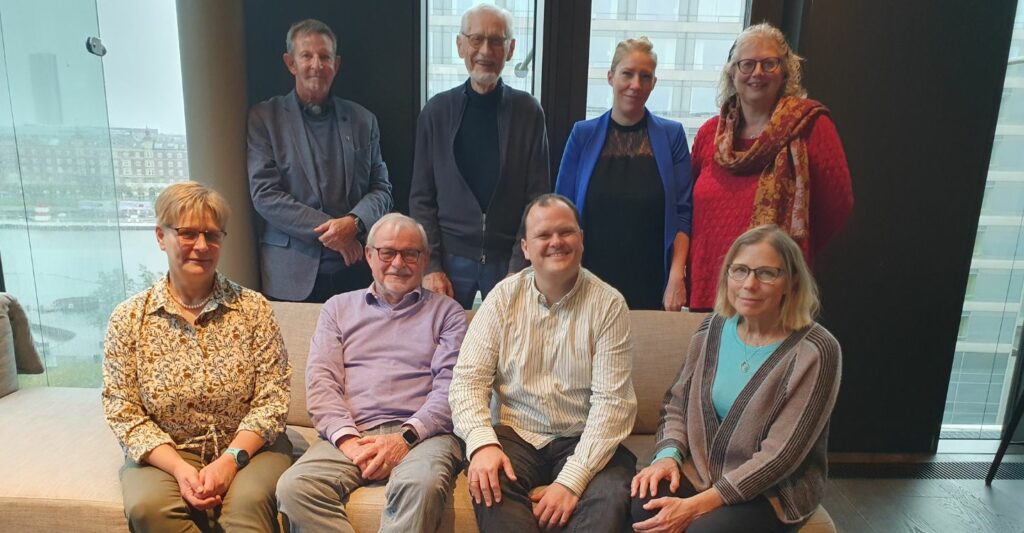
Members of the working group:
- Emil Maischnack Jensen, The Danish Rheumatism Association. Took 5 years to get a diagnosis.
- Ebbe Bouman, Hjerteforeningen. Has been with his wife to dozens of consultations.
- Nete Franklin Sørensen, Tarmkræftforeningen. Is by now a “professional” in late sequels.
- Katrine Kirk, patient ambassador at The Danish Society for Patient Safe. Wouldn’t be alive today if she hadn’t asked questions and wondered.
- Kira Ørbækker, patient ambassador at The Danish Society for Patient Safety. As a relative in a critical process, have experienced how difficult it can be to hear and understand what the doctor says.
- Anette Olivarius, Colitis-Crohn Foreningen. As a relative and in contact with other relatives, has experience with the many different perspectives that may be at play.
- Claus De La Porte, The Danish Cancer Society. Has undergone 44 interventions. Concerned that whoever is sitting quietly on the other side of the doctor’s table is also heard.
- Gert Poulsen, Dansk Myelomatose Forening. Relative for 29 years. Has extensive experience with difficult conversations.

